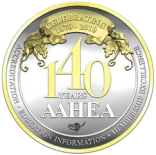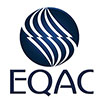Teaching Strategies That Make A Classroom Session Flourish
 It is said that imparting knowledge is one of the most essential pious karma that exists in the world. Teaching, the word might seem smooth and easy but the actual process is just the reverse. A teacher always has to keep in mind the potential of his/her students and how much they shall be able to accept the learning methodologies. That is why there are popular teaching strategies that teachers implement and all these are student-oriented teaching methods and activities.
It is said that imparting knowledge is one of the most essential pious karma that exists in the world. Teaching, the word might seem smooth and easy but the actual process is just the reverse. A teacher always has to keep in mind the potential of his/her students and how much they shall be able to accept the learning methodologies. That is why there are popular teaching strategies that teachers implement and all these are student-oriented teaching methods and activities.
There are different teaching methods and techniques and executing those strategies solely depends on how many students are there in the class, their cognitive intelligence, IQ level, physical and socio-emotional status. It is because not everyone belongs from the same stratum of society and every teacher can’t get information to the deeper. Latest teaching instructions and methods are being prescribed by the international teaching diploma courses that preach various ideas on strategies for great teaching.
Now, let's see what is the meaning of effective teaching strategies and how teachers use those instructional strategies to engage students in classroom sessions. Well, to be very honest, teaching strategies do not have to be necessarily innovative, now and then, but they must cater to the needs of the group of students on a large scale. Teaching and learning go hand in hand and teachers will use the best strategy to support their students while the lesson plan should have a strategy according to the topic that is going to be taught.
Since the classroom is a place where students and teachers get synced in the entire learning process, it is vital for the teachers to know students first. Knowing students first will be the first step to incorporate learning strategies and eventually they will develop respect for you. Thus, a teacher will be able to personalize lesson plans for students once he/she comes across their potential and they can learn more efficiently.
The next thing that walks down the aisle is the use of summative and formative assessments. Many teachers are not aware of the difference between these two forms of assessments.
- Summative assessments are assessments of learning and these take place after a block of work has been completed, whether this is a term or a year.
- Whereas, formative assessments are on a regular day basis are used to understand how much a student is progressing periodically. Based on this, it can be judged if a student is lagging and instructional strategies can be formulated so that they get over with their struggling period.
A student will always be elated if he/she gets the proper instructions from the teacher while doing an assignment. When explicitly described regarding any method, students get motivated to solve problems because they are aware of the steps that will help them to reach the solution. A person learns more when he knows how to solve the problem and this is one of the most vital student-centered learning approaches.
Another way of improving learning styles is by asking effective questions to students and this particular teaching strategy has boosted up active learning in a monumental way. Once a teacher is done with teaching a specific topic, he/she can ask questions to students like, ARE WE CLEAR? These types of conversations (inquiry-based learning) enhance the positive ambiance of the classroom and thus student-centered classrooms flourish.
There is room for rectifying mistakes for everyone and so, teachers must address the mistakes that students commit. The process of feedback is of utter importance whenever it comes to any learning or training session. Addressing the mistake will let students know that their track of progress will decelerate which will adversely affect their overall growth.
Teachers must take the initiative of conducting a feedback class at least once a week so that students do not lag behind. It can be either a one-on-one session or a small group session. This cooperative learning session as students learn together and receive feedback together. This approach is based on topics that have been taught in the class and are often called project-based learning.
Graphic organizers are some great tactics that enable teachers to execute their best teaching strategies in a great manner. These organizers concisely summarize information and using various kinds of charts or diagrams teachers give out unending information to the students.
These are the effective teaching strategies that are relevant to real-life situations and teachers learn how to execute these strategies when they join the international teaching diploma course. A classroom session becomes successful when both teachers and students synchronize among themselves smoothly and the flow remains constant. To keep this flow consistent, these popular teaching strategies are being implemented by teachers in the classroom.
















